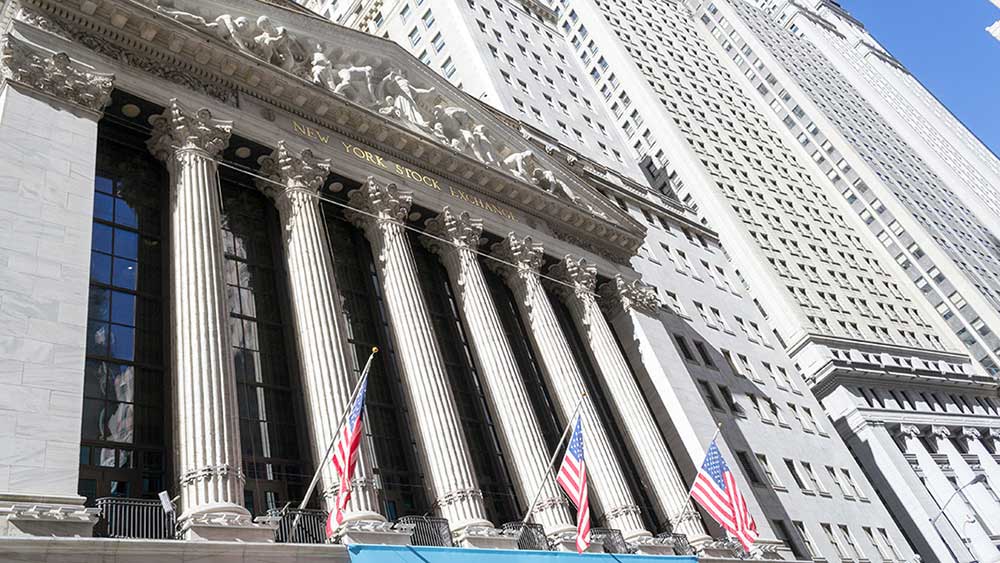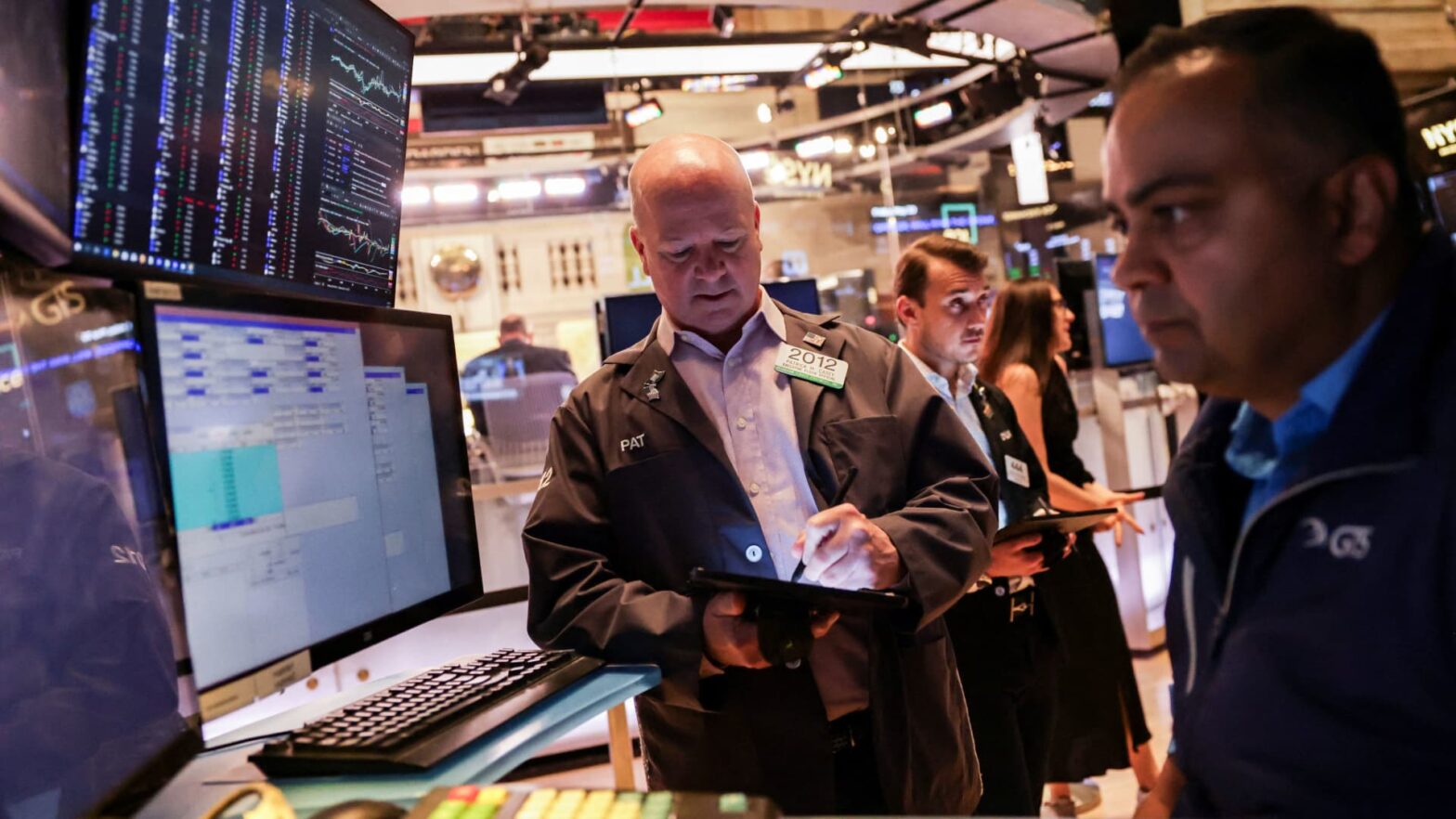U.S. stock markets routed on Friday on concerns of Trump’s tariffs, higher inflation rate and fear of a near-term recession. Wall Street has been facing extreme volatility since last month. All three major stock indexes ended in negative territory. For the week, these indexes also finished in red.
How Did The Benchmarks Perform?
The Dow Jones Industrial Average (DJI) tumbled 1.7% or 715.80 points to close at 41,583.90. At intraday high, the blue-chip index was down nearly 770 points. Notably, 26 components of the 30-stock index ended in negative territory and 4 ended in positive zone. Year to date, the Dow has entered in negative zone.
The major loser of the index was Amazon.com Inc. AMZN. The stock price of the global e-commerce giant tanked 4.3%. Amazon currently carries a Zacks Rank #3 (Hold). You can see the complete list of today’s Zacks #1 Rank (Strong Buy) stocks here.
The tech-heavy Nasdaq Composite finished at 17,322.99 sliding 2.7% or 481.04 points due to weak performance by technology bigwigs. In intraday trading, the tech-laden index was down 521 points and is trading in correction territory.
A correction territory is defined as a fall of 10% or more from the asset’s recent high. The index is currently down 14.3% from its recent high recorded on Dec. 16, 2024.The index has fallen more than 10% year to date, for the first time in past two years.
The S&P 500 tumbled 2% or 112.37 points to finish at 5,580.94. In intraday trading, Wall Street’s most observed benchmark slid nearly 121 points. 10 out of 11 broad sectors of the broad-market index ended in negative territory while one in positive zone.
The Financials Select Sector SPDR (XLF), the Materials Select Sector SPDR (XLB), the Industrials Select Sector SPDR (XLI), the Consumer Discretionary Select Sector SPDR (XLY), the Technology Select Sector SPDR (XLK) and the Communication Services Select Sector SPDR (XLC) fell 1.9%, 1.8%, 2.1%, 3.1%, 2.4% and 3%, respectively.
The fear-gauge CBOE Volatility Index (VIX) jumped 15.8% to 21.65. At intraday trading, the fear-gauge index touched 22.18, its highest level since March 18 and its largest percentage increase since March 10.
A total of 14.3 billion shares were traded on Friday, lower than the last 20-session average of 16.2 billion. The S&P 500 posted 10 new 52-week highs and 23 new lows while the Nasdaq recorded 35 new 52-week highs and 358 new lows.
Economic Data
The Department of Commerce reported that personal consumption expenditure (PCE) price index (PCE Inflation) rose 0.3% in February, in line with the previous month. Year over year, PCE inflation increased 2.5%, in line with January.
The core (excluding volatile items like food and energy) PCE inflation – Fed’s most preferred inflation gauge – rose 0.4% in February, exceeding the consensus estimate and January’s reading of 0.3%. This marked the biggest monthly gain since January 2024. Year over year, the core PCE inflation increased 2.8% in February, higher than the consensus estimate and January’s reading of 2.7%.
Personal income increased 0.8% in February, significantly higher than the consensus estimate of 0.4%. Previous month’s data was revised downward to 0.7% from 0.9% reported earlier. Personal savings rate came in at 4.6%. The reading for January was revised downward to 4.3% from 4.6% reported earlier.
On the other hand, personal spending – the largest component of the U.S. GDP – rose 0.4% in February, lower than the consensus estimate of 0.5%. January’s data was also revised downward to -0.3% from -0.2% reported earlier.
The University of Michigan reported that the final reading for consumer sentiment Index in March came in at 57, below the consensus estimate and the mid-March reading of 57.9, reflecting third consecutive months of decline. The reading for March plummeted 11.9% month-over-month and 28.2% year-over-year.
The sub-index for current economic conditions tumbled to 63.8 in March from 65.7 in February and 82.5 in March 2024. The sub-index for consumer expectations plummeted to 52.6 in March from 64 in February and 77.4 in March 2024.
The short-term (one year) inflation outlook spiked to 5% in March from 4.3% in February, marking the highest reading since November 2022 three successive months of unusually large increases of 0.5% or more. The long-term (5 to 10 years) inflation outlook surged to 4.1% in March from 3.5% in February, marking the first time reading of above 4% since February 1993.
Weekly Roundup
Last week was disappointing for Wall Street. The Dow, the S&P 500 and the Nasdaq Composite – tumbled 1%. 1.5% and 2.6%, respectively. Uncertainty regarding the Trump administration’s tariffs and trade policies and their impact on the U.S. economy, especially on an already-elevated inflation rate, rattled market participants’ sentiments.
Zacks Names #1 Semiconductor Stock
It’s only 1/9,000th the size of NVIDIA which skyrocketed more than +800% since we recommended it. NVIDIA is still strong, but our new top chip stock has much more room to boom.
With strong earnings growth and an expanding customer base, it’s positioned to feed the rampant demand for Artificial Intelligence, Machine Learning, and Internet of Things. Global semiconductor manufacturing is projected to explode from $452 billion in 2021 to $803 billion by 2028.
See This Stock Now for Free >>
Amazon.com, Inc. (AMZN) : Free Stock Analysis Report
This article originally published on Zacks Investment Research (zacks.com).
The views and opinions expressed herein are the views and opinions of the author and do not necessarily reflect those of Nasdaq, Inc.
















